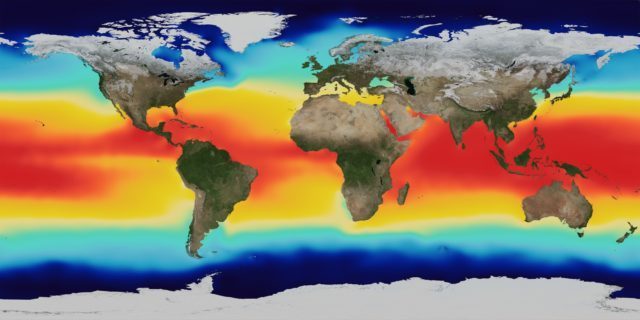Climate change is going too fast for living things. Attempts to adapt occur in all orders of life: with the rise in temperature, there are trees that are occupying spaces increasingly to the north or higher levels of the mountains. Many birds are advancing their migrations and the fish are moving north. But the few studies that are long enough over time show that there are few species that adapt to global warming.

A group of researchers has reviewed the scientific publications that have studied the response of different animals to rising temperatures caused by the ongoing climate change. They found almost 5,000 studies with data from more than 1,400 species in which the connection between temperature evolution and changes in certain characteristics or behavior patterns of different animals, such as the advance of the breeding period or that of migrations.
The study, published in Nature Communications, has not found confirmation that the species are undergoing morphological changes due to the selective pressure of the temperature rise. But yes, phenological changes, adaptations of behavior patterns of its life cycle, in general in the form of overtaking the events of that cycle, such as the end of hibernation or the beginning of the mating and breeding period. But these adaptations are not enough given the rapid pace of climate change.
“We see that some populations change too little by little, so they face a risk of extinction in a relatively short period of time”, says the evolutionary biologist of the IZW and co-author of the study Alexandre Courtiol in an email.
“With this database, we can say how temperature has affected the characteristics. For example, we show that, along many taxa [group of related organisms, which in a given classification have been grouped, assigning a name in Latin, a description if it is a species and a type], the tempo of the various biological events has advanced as temperatures rose in recent decades”, explains a researcher at the Leibniz Institute for Wildlife Research in an email and Zoologica (IZW, based in Berlin) and lead author of the study, Viktoriia Radchuk. “But this data set could not tell us anything about whether these responses of the species are adaptive, that is if they translate into any adaptation advantage, such as a greater number of offspring”, she adds.
In order to determine whether a change is adaptive or not, it is necessary to work for decades with the same populations. Therefore, there are hardly any studies that answer this last question. They only found 71 works on less than 20 species, mostly birds. Spanish researchers from the Experimental Station of Arid Zones (EEZA-CSIC) contributed their research with 3 of these species: the ratchet (Coracias garrulus), the gray owl (Otus scops), and the magpie (Pica pica) in the Guadix-Baza area, in the interior of Granada.
“We have observed that the carracas and autillos have advanced their laying date, each year they lay the eggs before, but not the magpies that have not modified their phenology during these last years”, says the researcher of the EEZA Jesús Miguel Avilés. This change of the date of laying does not bring benefits to the autillo, because it has no greater offspring when it breeds sooner, while the rattles do have more chickens when advancing the reproduction.
Even more worrying is the fact that the available data refer to relatively common and abundant species, such as the common coal, roe deer, or magpie, which are better coping with climate impact. “Adaptive responses among the rarest or threatened species are still to be investigated”, points out Stephanie Kramer-Schadt, also from the IZW, and adds: “We fear that the maintenance forecasts of the populations of these key species for conservation be even more pessimistic”.

